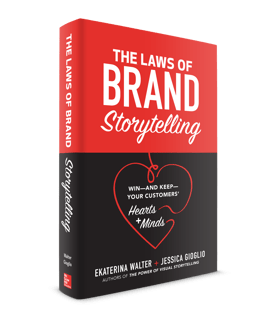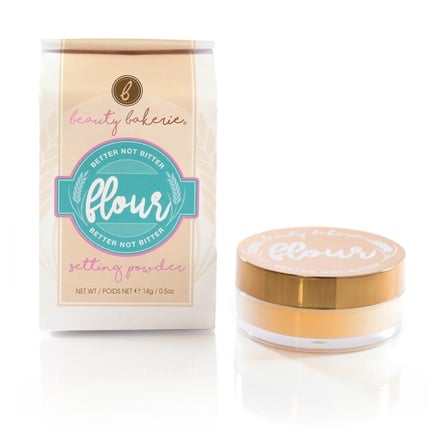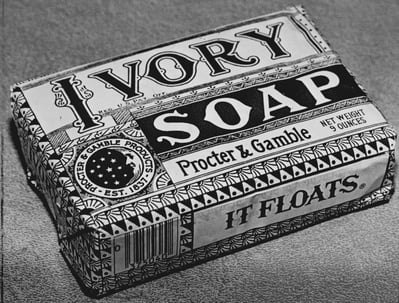What You Need To Know About Brand Storytelling
“Brand storytelling isn’t about creating marketing campaigns, but building tribes and inspiring movements.” ~ E.W. & J.G.
Have you ever asked yourself “What is brand storytelling?” or “Why is brand storytelling important?” 🤔 If so, this post is for you! We got the scoop from Ekaterina Walter and Jessica Gioglio, storytelling experts and coauthors of the inspiring brand storytelling book, The Laws of Brand Storytelling. In this series, Walter and Gioglio provide compelling brand stories, storytelling strategies, and insight on the key elements of brand storytelling such as creating utility and building authenticity.
In another post, we discussed The Utility Law, a story-making law in detail. If you want to learn more, you’ll have to read the book yourself! It’s available in hardback or as an audiobook on Amazon.
 |
 |
Photos from Ekaterina Walter
So what is brand storytelling?
Brand storytelling is how you connect with your audience, customers or otherwise, that share your values. It’s not about creating campaigns it's about creating communities. Brands are more than their manifestations. They are more than the logo, spokesperson, or color scheme. To become a storytelling brand marketers must consider a brand as the sum of experiences every person has with your company. These interactions can be real or perceived and can be with anyone from employees to partners to customers. Powerful brands know that a brand is not what you say it is, it’s what your customers say it is.
👩🏫 Brand Storytelling as Defined by Jessica Gioglio
Brand storytelling is the art of shaping a company’s identity through the use of narratives and storytelling techniques that facilitate an emotional response, and establish meaningful connections. Stories are more memorable than facts and figures, and allow the storyteller to connect with communities that share your values and your beliefs. When you tell your story in the right way, it comes from your heart and is inspiring, engaging, and never self-absorbed. Instead of simply creating marketing campaigns, think about how you can use storytelling to build tribes and inspire movements.
A Tale of Two Story Types in the Marketing World
There are two types of stories: macro and micro.
🎬 Macro Stories
Macro stories are likely the first that comes to mind when the term ‘brand storytelling’ comes up. These stories are about the founders of the company and the founding myth. They illustrate why the company does what it does. These stories of human struggle and success are sometimes so captivating they could be made into movies.
 Photo of Cashmere and daughter from Beauty Bakerie
Photo of Cashmere and daughter from Beauty Bakerie
Cashmere Nicole, founder of indie beauty brand Beauty Bakerie, tells a roller coaster ride of a story about her journey to success. Cashmere had entrepreneurial dreams at a young age. She had to put those dreams on hold when she became a single mother at 16. Cashmere struggled to continue her education while providing for her daughter. Motivated by her frustration, Cashmere decided to make some changes to be “better, not bitter”. Unfortunately, the hardships were far from over. Cashmere’s battle with breast cancer taught her that the little moments in life are truly precious. According to Cashmere, “A near-death experience taught me that nothing is more important in this life than the moments that are gone too fast. Having long-lasting, smudge-free makeup may seem like a simple novelty to one person, but to me, the 8-15 times I would have spent touching up my makeup today are now the 8-15 opportunities I have to be in the moment.” This powerful story is one of the reasons why women buy from Beauty Bakerie. They want to persevere just like Cashmere (and her lipstick). Cashmere’s strength is infused in every product.
 Photo of Beauty Bakerie's "Better Not Bitter" slogan from Beauty Bakerie
Photo of Beauty Bakerie's "Better Not Bitter" slogan from Beauty Bakerie
🔬 Micro Stories
Micro stories make up the bulk of brand storytelling. They can be found in every aspect of a brand: from its customer stories, to its packaging, and even its employees and factories. These stories can have a life of their own. For example, the accidental creation of Ivory soap by a Procter and Gamble factory worker is taught in history classes of Cincinnati’s elementary schools. Legend has it, an 1870’s factory worker forgot to shut off the mixer while making soap. Later, dozens of customers called the company to try to purchase this ‘floating soap’ but no one knew what they were talking about! After finding the batch, the company realized that the extra mixing must have added enough air to make the bar less dense than water. The soap was named by Procter’s son, Harley, who took inspiration from a bible verse and thus Ivory soap, “the soap that floats” was born. P&G took advantage of the accident to not only create a new product, but also a compelling story behind the product.
Walter and Gioglio emphasize that “Your micro stories cannot contradict your macro story. They are designed to extend it.” In the early days, Proctor and Gamble was a family company. This founding story isn’t lessened by the legend of Ivory soap. The fact that the soap was created by accident and named by a Procter’s son strengthens the imagery of an originally small town family company which has now become a multi-billion dollar corporation.
 Photo from SiLive
Photo from SiLive
Walter and Gioglio detail the process of implementing a brand story through something called a Storyteller's Journey. This journey divides the dozens of laws into six groups:
- The protagonist laws establish who you are as a company
- The strategy laws help you define your goals
- The discovery laws where you find your story
- The story-making laws assist you through the process of crafting the story which you then,
- Share with the guidance of the channel laws
- The laws of engagement teach you how to meaningfully engage with your audiences.
Leave no stone unturned! Use Digimind to discover your brand’s micro stories and strengthen your storytelling. Ask for a demo to see how social listening can enable marketers to tell better brand stories.

